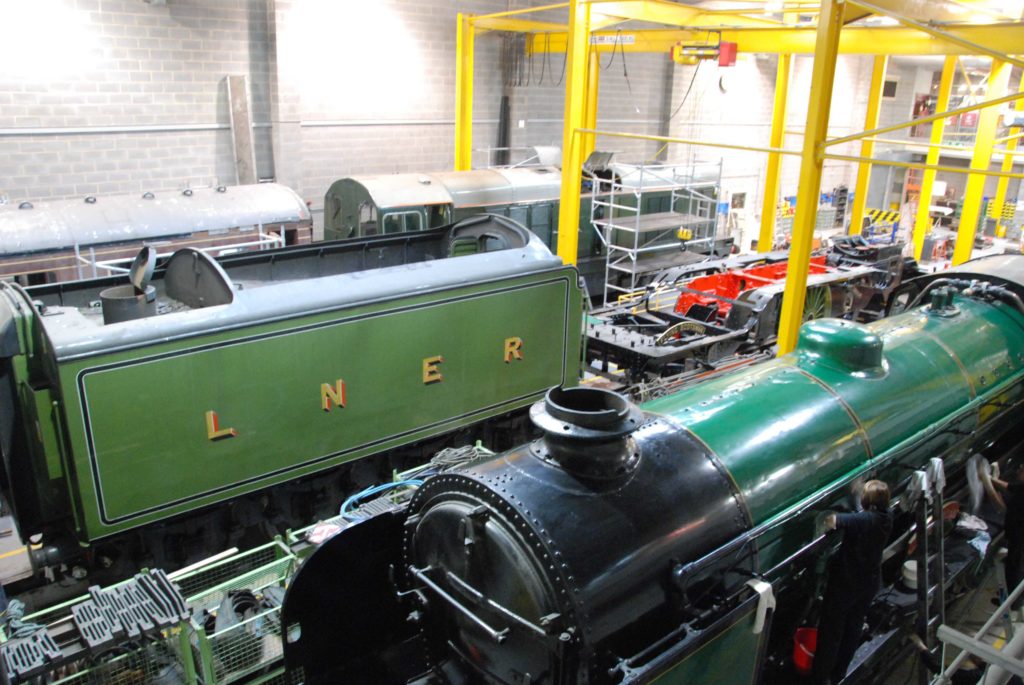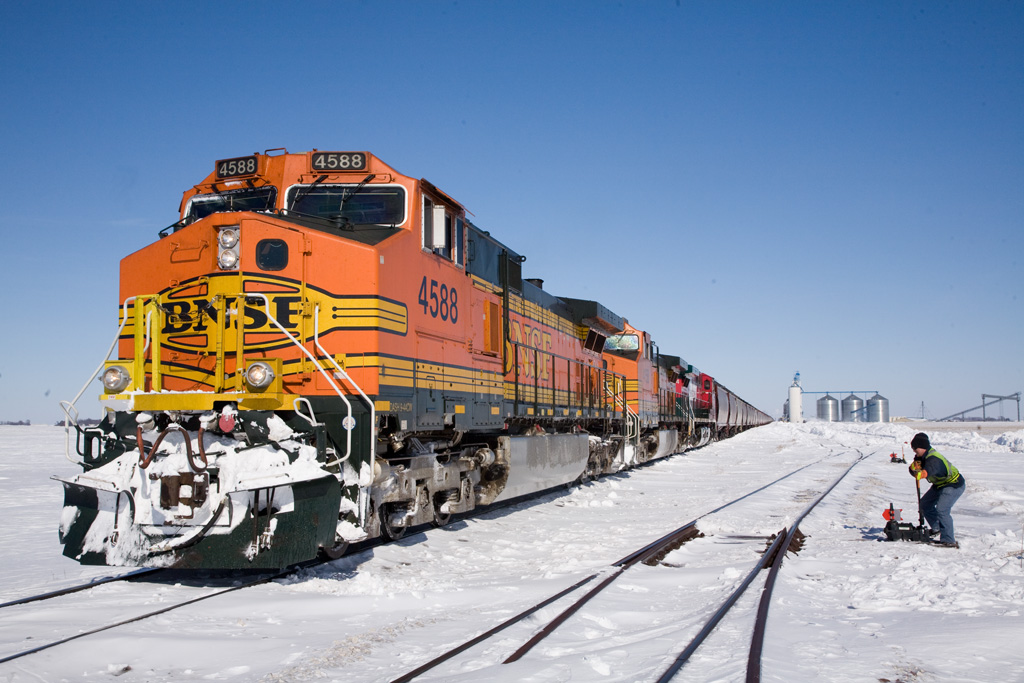
The tender for the famous Flying Scotsman and the frame reside in the shop at the National Railway Museum in York, England, in September 2008. The boiler is under repair at another location. Trains: Jim Wrinn England has the good fortune to obtain money for railroad preservation projects from the Heritage Lottery Fund (through its […]
Read More…

A Canadian National Railway conductor delivers a BNSF Railway grain train to New Coop in Knierim, Iowa, on March 5, 2007. The elevator gets BNSF grain shuttles by way of a haulage rights agreement over CN. […]
Read More…

50 years ago in railroad history … A supplement to the Classic Trains Online Look Back e-mail newsletter The U.S. Supreme Court on March 2 upholds a lower court’s ruling not to interfere in the discontinuance of New York Central’s Weehawken-Cortland Street Hudson River ferries, paving the way for their last runs on March 24; […]
Read More…
A supplement to the Classic Trains Online Look Back e-mail newsletter Outfits I have known By Michael J. McLaughlin One of the most memorable aspects of my career in railroad maintenance of way is the “outfit.” An outfit was usually a collection of old revenue cars–both passenger and freight–converted to sleeping, cooking, shower, supply, tool, […]
Read More…

50 years ago in railroad history … A supplement to the Classic Trains Online Look Back e-mail newsletter Pullman car Ferdinand Magellan, modified to haul the President of the United States in 1942 and in POTUS ever since, is donated to the Florida Development Commission for display at the University of Miami; it later moved […]
Read More…

A window in Thrums By Steven Duff Thrums is a name that somehow resonates above most others, a name, as we say these days, that has Attitude. It is a Scottish word, immortalized in Sir James Barrie’s novel, A Window in Thrums, and is perpetuated in Canada by a small town in British Columbia. In […]
Read More…
Q Can you please explain the visual and mechanical differences among EMD’s SW-1500, MP15DC, and MP15AC switchers?– Andrew J. Jones, Wigan, England A Electro-Motive’s SW1500, MP15, and MP15AC were all 1,500-hp switchers, but the later MP series were significant upgrades to the older SW models. The SW1500, built 1966-1974, used a non-turbocharged 12-cylinder 645E engine. […]
Read More…
Q I saw an unclear photo of a Pennsylvania steam locomotive identified as an S2, with the number 6200. Two things caught my eye: the 6-8-6 wheel arrangement, and the absence of any visible cylinders or driving rods. What can you tell me about it?– J.H. Lehman, Dayton, Ohio A The 6200 was a one-of-a-kind […]
Read More…
Q I saw a big tank car (DUPX 29744) at Wilson, N.C. It was quite long, with four trucks. What products do these cars carry? How many are there, how heavy are they, and why so big? – D. Wescott, Wilson, N.C. A It is a 43,800-gallon, 526,000-pound (gross weight) car owned by DuPont, in […]
Read More…
Q On many Union Pacific refrigerated boxcars, the reporting mark “ARMN” appears below the UP shield. What railroad is that?– Kevin Margan, Madison, Wis. A Normally any reporting mark not ending is “X” indeed stands for a railroad company (“X” signifying privately owned cars), and UP, like several Class Is, still uses initials of railroads […]
Read More…
Q On the front of a typical diesel locomotive are six “hoses.” Please define their purpose. Further, above the coupler is what appears to be a shorting hose. What is that? – Howard Beard, New Port Richey, Fla. A What you’re seeing is two sets of three hoses that are part of a train’s air-brake […]
Read More…



